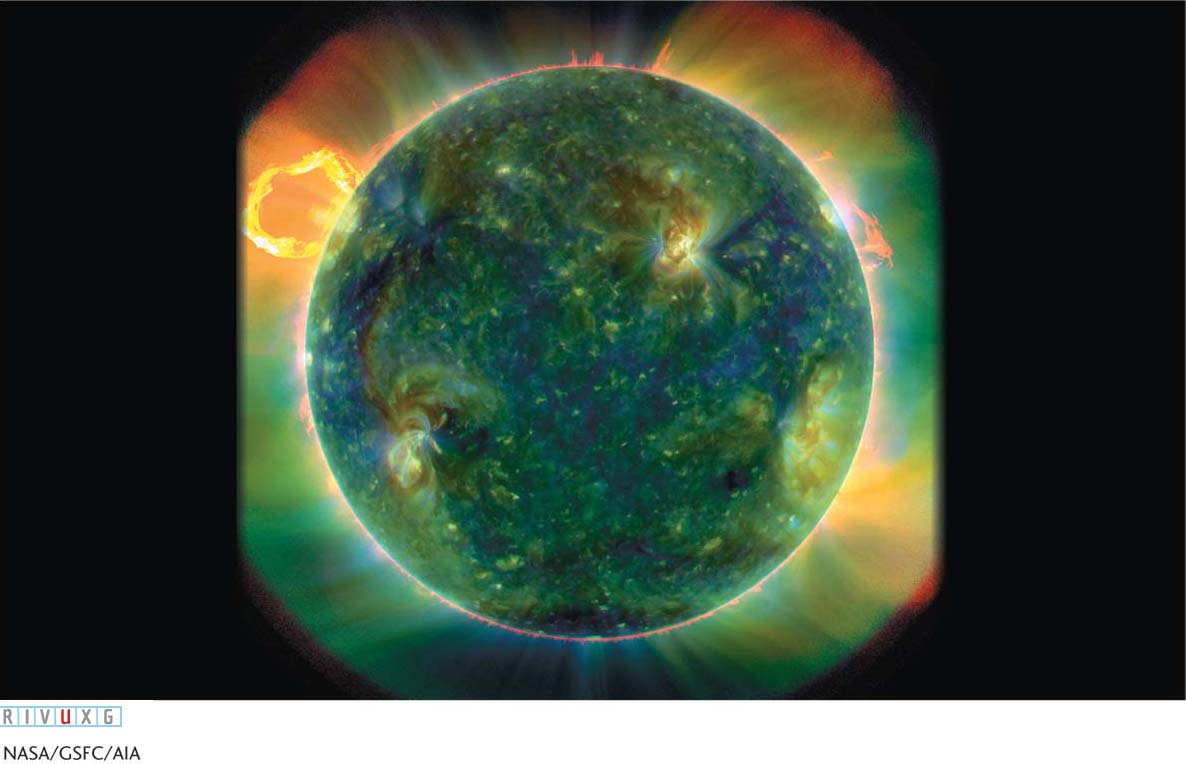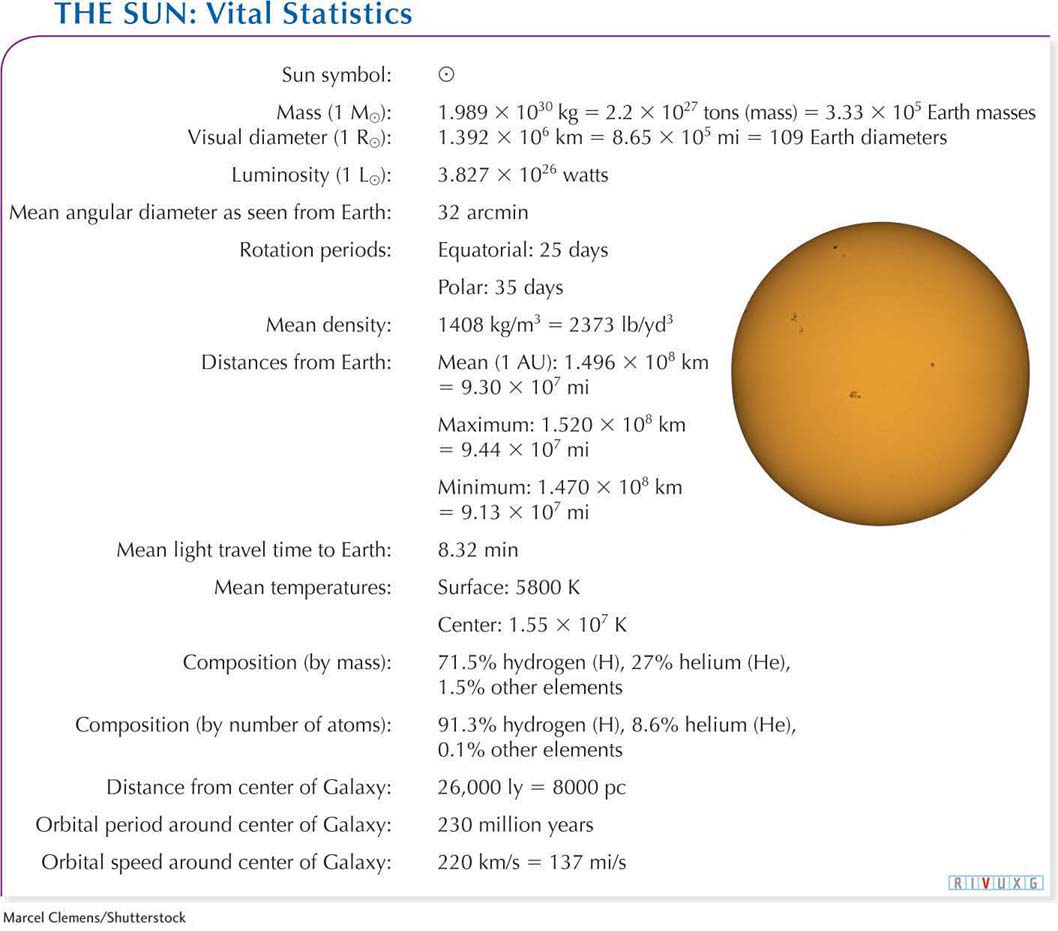Chapter Introduction
267

The Sun: Our Extraordinary Ordinary Star
WHAT DO YOU THINK?
 What percentage of the solar system’s mass is in the Sun?
What percentage of the solar system’s mass is in the Sun? Does the Sun have a solid and liquid interior like Earth?
Does the Sun have a solid and liquid interior like Earth? What is the surface of the Sun like?
What is the surface of the Sun like? Does the Sun rotate? If so, how fast?
Does the Sun rotate? If so, how fast? What makes the Sun shine?
What makes the Sun shine? Are matter and energy conserved?
Are matter and energy conserved?
Answers to these questions appear in the text beside the corresponding numbers in the margins and at the end of the chapter.
268
 The Sun is the closest star to Earth. The Sun contains as much mass as 333,000 Earths. Indeed, the Sun contains 99.85% of the solar system’s mass. By studying it, astronomers have come to understand how most stars throughout the universe work. As powerful and majestic as it is in our sky, we are going to discover in the next few chapters that the Sun is an ordinary star, neither among the most massive nor among the least massive. Similarly, it is neither among the brightest nor among the dimmest of stars. Figure 9-1 lists the Sun’s properties.
The Sun is the closest star to Earth. The Sun contains as much mass as 333,000 Earths. Indeed, the Sun contains 99.85% of the solar system’s mass. By studying it, astronomers have come to understand how most stars throughout the universe work. As powerful and majestic as it is in our sky, we are going to discover in the next few chapters that the Sun is an ordinary star, neither among the most massive nor among the least massive. Similarly, it is neither among the brightest nor among the dimmest of stars. Figure 9-1 lists the Sun’s properties.

In this chapter you will discover
why the Sun is a typical star
how today’s technology has led to a new understanding of solar phenomena, from sunspots to the powerful ejections of solar matter that sometimes enter our atmosphere and disrupt our technology
that some features of the Sun generated by its varying magnetic field occur in cycles
how the Sun generates the energy that makes it shine
new insights into the nature of matter provided by solar neutrinos
269
 This ultraviolet image of the Sun, taken in 2010 by the Solar Dynamics Observatory, shows a prominence (upper left) in which magnetic fields carry gases above the Sun’s surface in a loop that can extend upward hundreds of thousands of kilometers.
This ultraviolet image of the Sun, taken in 2010 by the Solar Dynamics Observatory, shows a prominence (upper left) in which magnetic fields carry gases above the Sun’s surface in a loop that can extend upward hundreds of thousands of kilometers. Our Star, the Sun The Sun emits most of its visible light from a thin layer of gas, called the photosphere, as shown. Although the Sun has no solid or even liquid region, we see the photosphere as its “surface.” Astronomers always take great care when viewing the Sun by using extremely dark filters or by projecting the Sun’s image onto a screen.
Our Star, the Sun The Sun emits most of its visible light from a thin layer of gas, called the photosphere, as shown. Although the Sun has no solid or even liquid region, we see the photosphere as its “surface.” Astronomers always take great care when viewing the Sun by using extremely dark filters or by projecting the Sun’s image onto a screen.